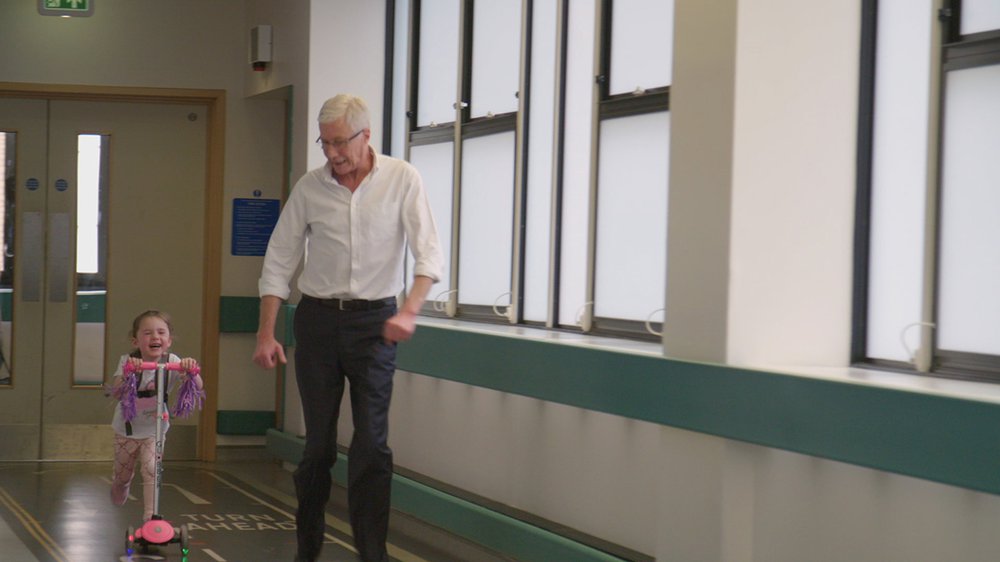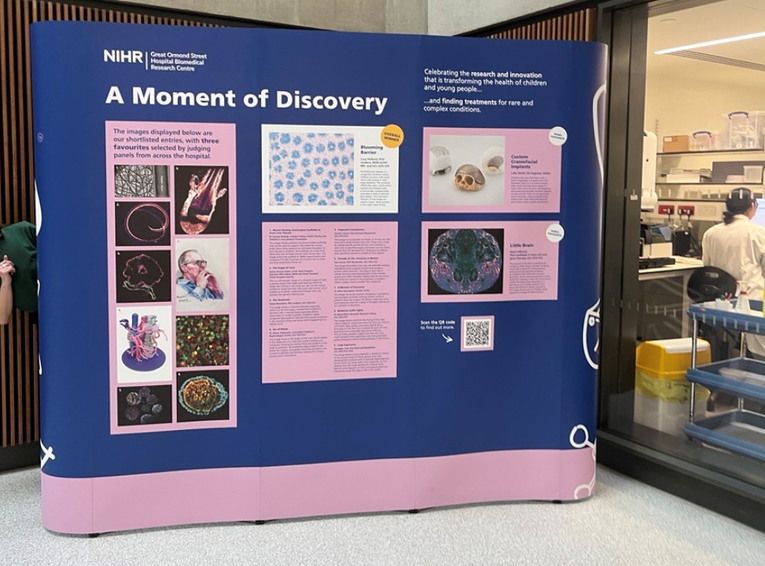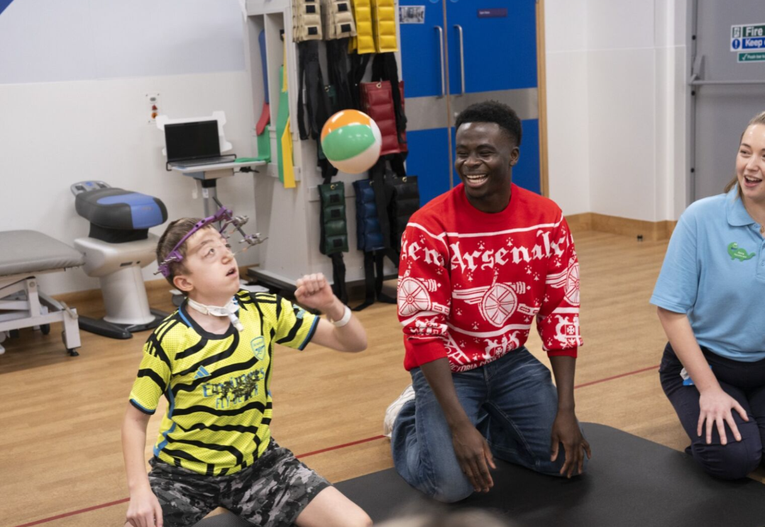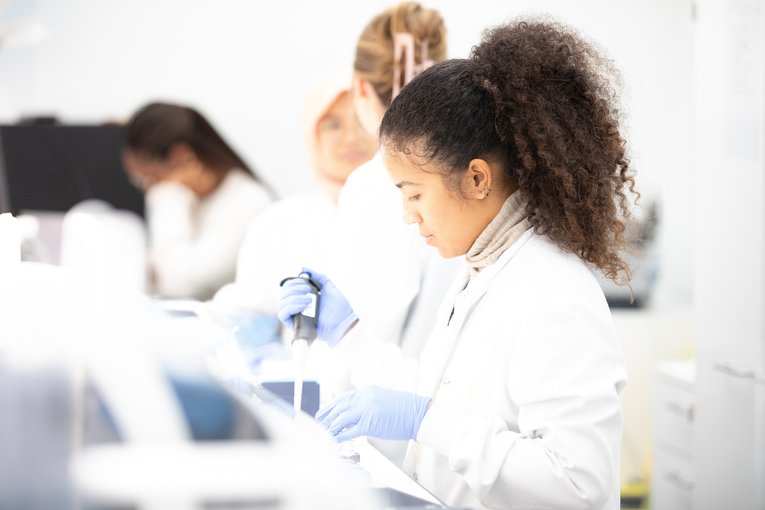
https://www.gosh.nhs.uk/news/lucys-life-saving-surgery/
Lucy's life saving surgery
17 Oct 2019, 9:38 a.m.
Lucy, who features in episode 6 of Paul O’Grady’s Little Heroes, underwent two surgeries to correct the 'plumbing' in her heart shortly after birth. Lucy now has a Hickman line in place to intravenously administer medication 24/7. She carries the medication around in lots of different colourful backpacks. Her mum, Claire, shares their story:
The diagnosis
“I was over the moon when my baby girl was born. I imagined we’d be home in six hours, but we were in hospital for 11 weeks.”
When Claire and David, from Glasgow, were pregnant with their first child, doctors noticed their baby wasn’t growing. Born via induction at 37 weeks, Lucy started to go blue just an hour after birth.
Doctors took Lucy – who at birth weighed only 4lbs 3.5oz (less than 2kg) – to the neonatal unit at their local hospital to investigate what had caused her change in colour. The team suspected she had transposition of the great arteries – a congenital heart defect where the heart’s two main arteries are reversed, leaving a shortage of oxygen in the blood.
The family were transferred to the neonatal unit at York Hill, which is now Glasgow Children’s Hospital, for a transposition operation. However, Lucy had to first gain weight, so surgeons waited until she was seven weeks old to operate on her. The operation was seemingly successful, and Lucy’s check-ups throughout the following year were positive.
At Lucy’s one-year post-op check-up, doctors noticed her blood pressure was high and fitted a catheter to test the pressure of her heart. The following morning, Lucy collapsed at home and was rushed back to hospital where, after a two-week investigation, the family were given the diagnosis of pulmonary hypertension – high blood pressure in the lungs that causes strain on the heart.
“My world just crashed.”
“The first thing I wanted to know was: ‘What’s the operation we need to get her fixed?’” says Claire. “That’s when they told us that this illness doesn’t have any cure. There was nothing we could do.
“My world just crashed. It was the worst thing to hear. I said: ‘What do you mean? There must be something?’ There was a question in my head, but I didn’t want it answered: ‘So how long has she got?’ The doctor told me: ‘Maybe a year.’”
Lucy was referred to Great Ormond Street Hospital (GOSH) in London, where she was placed on oral medication. However, she didn’t respond to the medication in the way the doctors wished, so it was decided that she would need surgery to fit a Hickman line permanently into her chest in order to administer her IV medication directly.
Consequently, Lucy’s family has just two weeks at GOSH to learn how to administer her medication at home, including operating the small pump that infuses her treatment via a central line. In turn, they trained Lucy’s grandparents and nursery staff because her medications must run continuously for 24 hours a day, seven days a week. At Lucy’s nursery, the children know not to touch her special unicorn backpack that holds her pump.
Lucy returned to GOSH when she was two years old for further surgery, where she had a blow-off valve implanted to help ease the pressure in her heart. It involved inserting a disc into Lucy’s heart, allowing the chambers to regulate the pressure when it becomes too high.
The crucial decision came when the doctors broke the news that to further improve Lucy’s prognosis, she would need more surgery – this time to either fit a Potts shunt to help her heart’s functionality, or to have a lung transplant.
Big decision
“The doctors didn’t have a lot to tell me about the outcome of the lung transplant, as so few children have received one, so it was a hard decision to make,” says Claire. “It’s not like there’s a donor organ waiting on a shelf, and there’s no guarantee that Lucy’s body would accept it. It could take 10 years and then she’d be back at square one, followed by more hospitals and different drugs.
“Do we take out her lungs that are working okay, or introduce a Potts shunt that has only been administered on three children, which is risky?’ It was a big decision on our shoulders – it’s your kid’s life in your hands. We decided to go with the Potts shunt surgery. Even that operation didn’t fix Lucy, but it did give her a better quality of life.”
The Potts shunt operation took place at GOSH and was a new technique for decompressing the heart’s right ventricle to improve the organ’s efficacy.
Scooting into the future

Following her operation, Lucy’s parents acknowledge the distance she’s come. Her Dad David shares: “Before the operation, she would walk down the stairs and get out of breath. We'd have to carry her everywhere. She'd never be scooting around like she is now, full of energy.
"She was back at school last week, and we have some amazing news about her backpack. It's due to come off late October. Lucy has said for a while that when she turns five on 1st October, she won’t need her backpack. She must have a sixth sense because it seems like her birthday wish is coming true! She used to keep telling us ‘I don’t need my backpack anymore when I go to school, so I can give it to another wee boy or girl who needs it”. She’s got a kind heart and great intuition.”

Fifth annual 'Moment of Discovery' image competition open 5-18 January
The annual Research and Innovation Image Competition, A Moment of Discovery, is back for the fifth year and open for entries between 5-18 January 2026.

Arsenal stars bring festive cheer to patients, families and staff
GOSH was buzzing with excitement this month as players from Arsenal’s men’s and women’s first‑team squads paid a special visit to children, families, and staff.

NIHR launches £13.7m investment into brain tumour research
The National Institute for Health and Care Research (NIHR) has announced a £13.7 million investment that will support ground-breaking research to develop novel brain tumour treatments in the UK.

New consortium aims to help improve care for arthritis patients
A new UK-led research group, including Great Ormond Street Hospital and University College London, aims to improve the lives of children, young people and adults with arthritis by defining for the first time what being in ‘remission’ from arthritis truly

